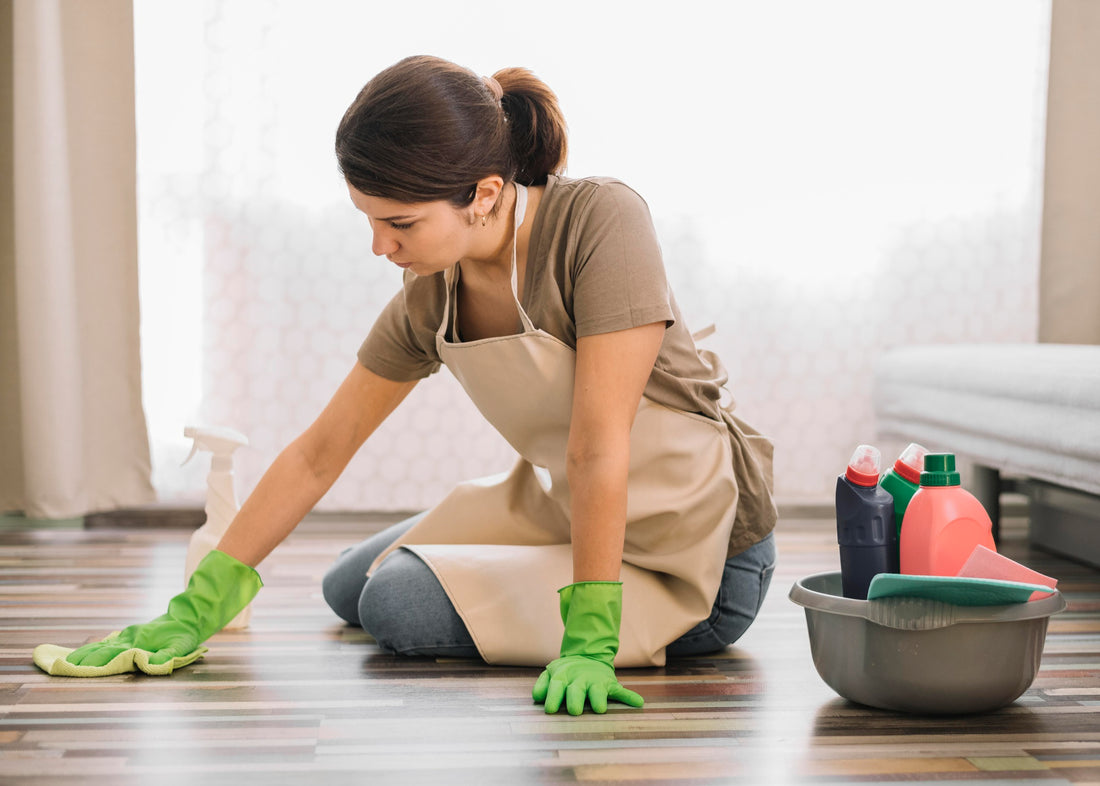Keeping your home clean and tidy is essential for a comfortable living environment. One significant aspect of cleanliness is maintaining clean floors. But with so many flooring options available, ranging from carpets to hardwood, laminate to tiles, it can be challenging to determine which type of flooring is the easiest to keep clean. In this article, we'll explore various flooring options and discuss their pros and cons regarding cleanliness, helping you make an informed decision for your home.
1. Hardwood Flooring
Hardwood flooring is a timeless option known for its durability and aesthetic appeal. When it comes to cleaning, hardwood floors are relatively easy to maintain. Regular sweeping or vacuuming to remove dust and debris is usually sufficient. Additionally, hardwood floors can be mopped with a damp cloth or a wood floor cleaner for deeper cleaning.
Pros:
- Hardwood floors are smooth and don't trap dust and allergens like carpets.
- Spills and stains can be quickly wiped away, reducing the risk of permanent damage.
- With proper care, hardwood floors can last for decades, maintaining their beauty over time.
Cons:
- Hardwood floors are susceptible to scratches and dents, especially from high heels or heavy furniture.
- They can be sensitive to moisture, so spills should be promptly cleaned to prevent warping or staining.
- Hardwood floors may require occasional refinishing to maintain their appearance, which can be costly and time-consuming.
2. Laminate Flooring

Laminate flooring offers the look of hardwood at a more affordable price point. It consists of multiple layers, including a durable top layer that resists scratches and stains. Cleaning laminate flooring is relatively straightforward and requires regular sweeping or vacuuming to remove dirt and dust. Occasional mopping with a damp mop or a laminate floor cleaner can help maintain its appearance.
Pros:
- Laminate flooring is highly resistant to scratches, stains, and fading, making it ideal for high-traffic areas.
- It's easy to install, often featuring a click-lock system that doesn't require glue or nails.
- Laminate flooring is more affordable than hardwood and can mimic various wood grains and textures.
Cons:
- While laminate is resistant to moisture, excessive water can seep into the seams and cause damage.
- Unlike hardwood, laminate flooring cannot be refinished, so scratches and damage may be more noticeable.
- It may lack the warmth and authenticity of real wood flooring, which can affect the overall aesthetic of a room.
3. Vinyl Flooring
Vinyl flooring has gained popularity in recent years due to its versatility, affordability, and low maintenance requirements. Available in a wide range of styles, including tiles, planks, and sheets, vinyl flooring is easy to clean and maintain. Regular sweeping or vacuuming followed by mopping with a mild detergent solution is usually all that's needed to keep vinyl floors looking their best.
Pros:
- Vinyl flooring is water-resistant and highly durable, making it suitable for kitchens, bathrooms, and other moisture-prone areas.
- It's comfortable underfoot and provides excellent noise insulation, reducing sound transmission between floors.
- Vinyl flooring is budget-friendly and can replicate the look of natural materials like wood or stone at a fraction of the cost.
Cons:
- While vinyl flooring is resistant to water, it can be susceptible to damage from sharp objects or heavy furniture.
- Over time, vinyl floors may show signs of wear and tear, such as scratches or fading, particularly in high-traffic areas.
- Installation can be tricky, especially for larger rooms or irregular-shaped spaces, requiring careful measurements and preparation.
4. Ceramic Tile Flooring

Ceramic tile flooring is a popular choice for kitchens, bathrooms, and other areas where moisture resistance is essential. Available in a variety of colours, patterns, and finishes, ceramic tiles are durable and easy to clean. Sweeping or vacuuming followed by mopping with a mild detergent is typically all that's required to maintain ceramic tile floors.
Pros:
- Ceramic tiles are extremely durable and resistant to scratches, stains, and moisture, making them ideal for high-traffic areas.
- They offer limitless design possibilities, allowing homeowners to create custom patterns and layouts.
- Ceramic tiles are hypoallergenic and easy to clean, making them suitable for households with pets or allergy sufferers.
Cons:
- Grout lines between tiles can trap dirt and grime, requiring regular scrubbing to keep clean.
- Ceramic tiles can be cold and hard underfoot, which may not be comfortable for some individuals, especially in colder climates.
- Installation can be labour-intensive and may require professional expertise to ensure proper alignment and sealing.
Conclusion
Choosing the right flooring for your home involves considering various factors, including aesthetics, durability, and maintenance requirements. While each type of flooring has its pros and cons, some are easier to keep clean than others. Hardwood and laminate flooring offer timeless appeal and relatively easy maintenance, while vinyl and ceramic tile flooring provide excellent durability and moisture resistance.
Ultimately, the best flooring option for you will depend on your lifestyle, budget, and personal preferences. By weighing the pros and cons of each type of flooring and considering your specific needs, you can select a flooring option that not only looks great but is also easy to keep clean, ensuring a clean and comfortable living environment for years to come.
